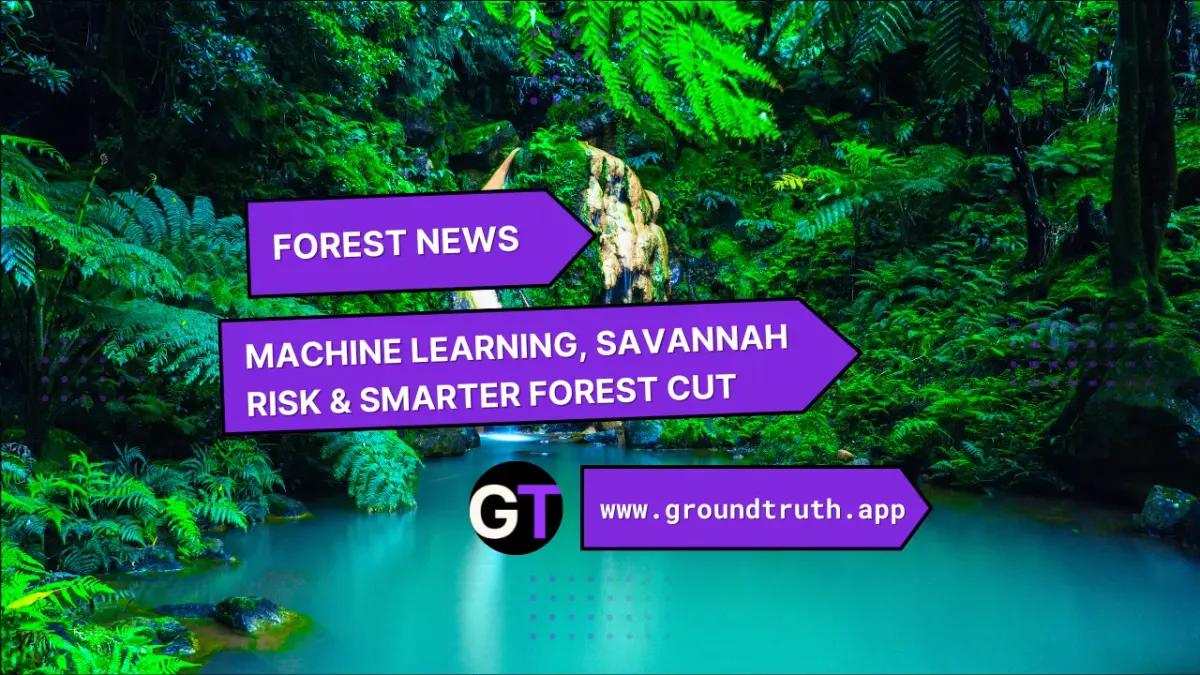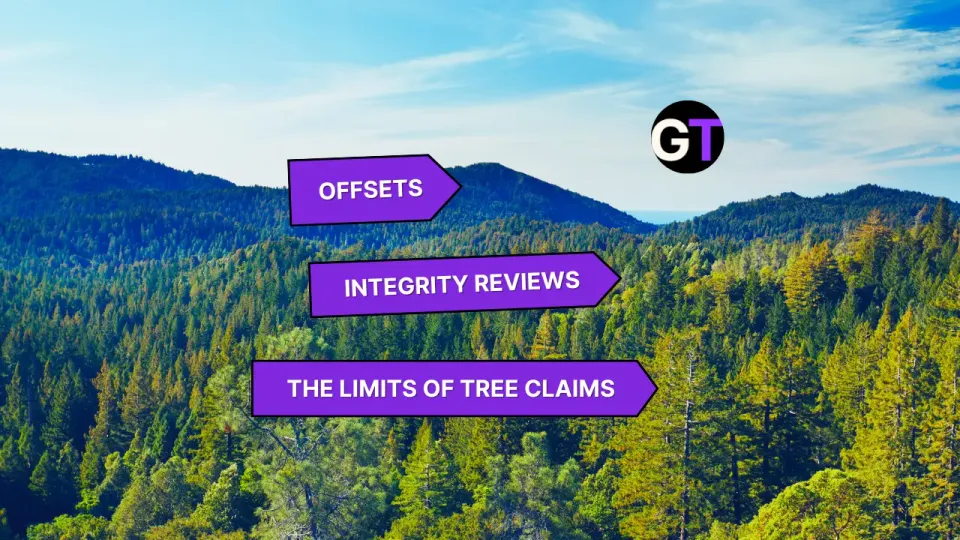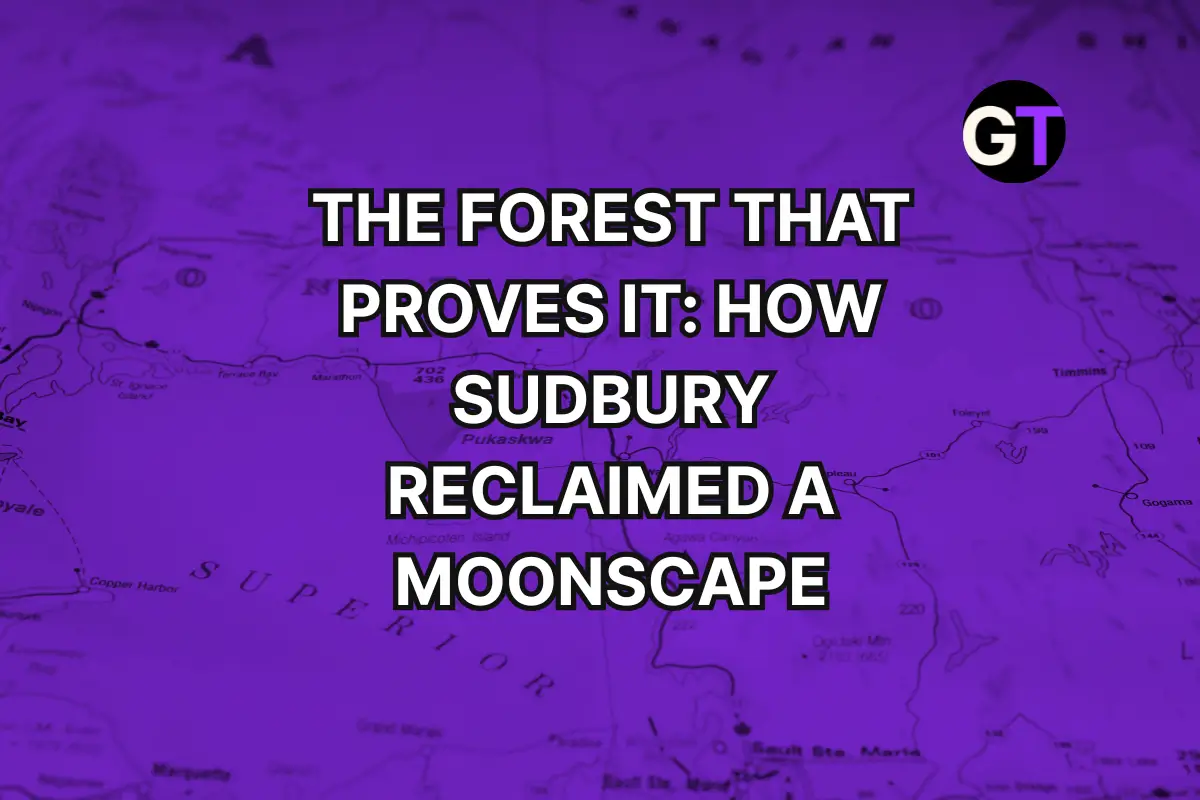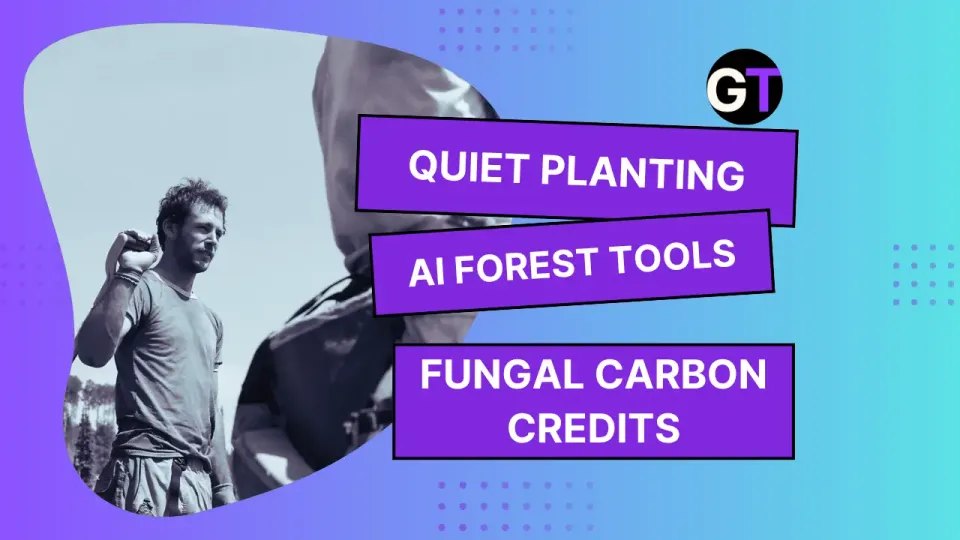Machine Learning, Savannah Risk & Smarter Forest Cuts
Weekly news of reforestation and data-driven forest progress, July 4, 2025.

Machine Learning Tracks Afforestation at Indian Iron Mine
Can industrial mining sites become models for ecological restoration? A new study evaluates Tata Steel’s efforts to revegetate 165+ hectares at its Noamundi iron ore mine in Jharkhand, India. Using satellite data from 1987 to 2022, researchers applied multiple machine learning algorithms—including random forest and gradient tree boost—via Google Earth Engine to detect land use changes. High-resolution imagery and drone data confirmed afforestation progress despite expanded mining activity. The study proposes a scalable method to monitor restoration with precision, and ties this transparency directly to ESG reporting and sustainable land management.
💬 Can AI-powered land monitoring help raise the bar for corporate accountability in nature restoration—especially in extractive sectors?
👉👉 Read the full article in Environmental Monitoring and Assessment
Amazon Nears Tipping Point—But Can Restoration Pull It Back?
Brazilian scientist Carlos Nobre warns the Amazon is dangerously close to ecological collapse—with 18% already deforested and worsening droughts accelerating self-degradation. In an in-depth Guardian interview, he outlines how degraded pastures recycle far less water than intact forest, tipping vast southern regions toward savannah-like conditions. But Nobre also sees hope in reforestation: restoring abandoned cattle lands, halting deforestation, and building a new forest-based bioeconomy could still shift the trajectory.
💬 If we act quickly, can restoration in degraded zones still help pull the Amazon back from the brink?
👉👉 Read the full interview in The Guardian
West Africa Builds Momentum for Dryland Restoration
Burkina Faso hosted the first West Africa workshop under the GEF-7 Dryland Sustainable Landscapes Impact Program (DSL-IP), uniting over 45 participants from across the region to share lessons and strategies for restoring degraded land. With field visits, peer exchanges, and technical sessions, the workshop emphasized regional cooperation, gender inclusion, and financing pathways for scaling up Nature-based Solutions. Burkina Faso’s national DSL-IP project aims to restore 150,000 hectares—highlighting how land restoration is becoming central to sustainable development in dryland regions.
💬 Can peer learning and regional exchange unlock faster, smarter land restoration across West Africa’s drylands?
👉👉 Read the full article from IUCN
New R Package Makes Advanced Forest Model Open-Source
Scientists have released R3DFEM, a new open-source R package that brings the powerful 3D-CMCC-FEM forest model to a broader audience. The model simulates how forests grow, absorb carbon, and respond to climate and management—but was previously locked behind complex C-language code. With R3DFEM, users can now run simulations, prepare input data, and visualize results using R, making high-resolution forest modeling more accessible to researchers, students, and forest planners.
💬 Could tools like R3DFEM help democratize access to climate modeling and improve transparency in forest science?
👉👉 Read more in Earth Science Informatics
Not All Thinning Is Equal: Forest Carbon Depends on the Cut
New modeling from western Maine shows that how you thin a forest—not just how much you cut—can shape carbon outcomes for decades. Simulating three thinning methods (from below, above, or throughout the stand), researchers found stark differences in long-term carbon storage. For example, thinning from above left fewer but larger trees and led to higher carbon retention in some mixed stands, while thinning from below removed hundreds more stems with very different results. It’s a reminder that forest carbon accounting needs to consider silvicultural detail—not just area and volume.
💬 If restoration and carbon storage are the goals, do forest plans need to get more selective about which trees are cut?
👉👉 Read more at Arbor Analytics
CORE Carbon, Fire Labs & Indonesia’s Forest Fix
This week’s roundup tracks nature finance in action: Canada’s first Fire Labs explored how Indigenous-led models could shift the wildfire paradigm from suppression to resilience; a new report maps the nature economy to better channel private capital; and LandYield’s CORE Carbon acquisition promises faster access to carbon markets for small forest owners. Meanwhile, a major study calls for Indonesia to restore millions of hectares through carbon markets, but warns that only high-integrity systems can scale trust. Plus: a global climate finance dataset reveals where two decades of public funds have flowed.
💬 Can better data and fairer finance finally deliver the scale and integrity that restoration needs?
👉👉 Read our weekly column in Ground Truth
Nigeria Aims to Plant 20 Billion Trees, Citing Ethiopia’s Green Legacy
Nigerian Vice President Kashim Shettima has announced plans to launch a “massive tree planting campaign” during the next rainy season, inspired by Ethiopia’s Green Legacy Programme. Nigeria’s goal? An ambitious 20 billion trees—an order of magnitude larger than Ethiopia’s reported figures. The campaign is part of a broader push to boost reforestation, create jobs, and strengthen ties with Ethiopia on agriculture and climate strategy. Officials say the program will also support Nigeria’s shift away from oil dependency through expanded agroexports like avocado and cashew.
💬 With bold targets in sight, will Nigeria deliver more transparency—and stronger data—than Ethiopia’s often-contested Green Legacy numbers?
👉👉 Read more in The Sun
Burying Wood Debris Could Help U.S. Reach Net-Zero by 2050
A new Nature study suggests that burying two-thirds of U.S. wood waste just 2 meters underground could help the country hit net-zero emissions by 2050. Researchers from Cornell University estimate the global carbon removal potential of this method at 770–937 gigatons by 2100—cutting global warming by as much as 0.42°C. Unlike burning or letting wood rot, burial traps carbon in soil, where it can remain for centuries.
Dubbed “wood vaulting,” the technique is cheap, scalable, and already being piloted on wildfire-burned lands in Montana. Advocates say it could also reduce wildfire risk and sequester millions of tons of CO₂ per year.
💬 Is burying biomass the low-tech carbon capture breakthrough we’ve been missing?
👉👉 Read more in Nature
EU Council Backs New Forest Monitoring Framework
The European Council has endorsed a proposed forest monitoring framework aimed at improving data collection and resilience across EU forests. While backing the need for harmonized, comparable data, the Council pushed for a bottom-up approach—starting with national inventories—and removed several contentious elements, such as the "forest unit" concept and mandatory long-term plans. Remote sensing will remain optional, with member states in charge of mapping and indicator selection. Negotiations with the European Parliament will follow.
💬 Can a bottom-up, flexible approach still deliver the data coherence needed to safeguard Europe’s forests?
👉👉 Read the press release from the Council of the EU
Former UK Negotiator Questions Feasibility of 2030 Biodiversity Targets
Will Lockhart, former UK lead at UN biodiversity talks, says the global goal to halt and reverse biodiversity loss by 2030 may have been unachievable from the start. In a wide-ranging interview, Lockhart reflects on the ambition behind the Kunming-Montreal Global Biodiversity Framework, the political value of time-bound targets, and the gap between COP outcomes and national implementation. Despite hopes pinned on the framework, only 26% of countries have submitted updated action plans. “We risk missing the wood for the trees,” Lockhart warns, if COPs are treated as endpoints rather than catalysts.
💬 If implementation keeps lagging, should future COPs focus less on ambition and more on delivery?
👉👉 Read the full article in Carbon Brief
Amazon Rainforest Could Offset Up to 2% of Global Emissions
A new report outlines how Brazil could raise $10–20 billion by 2030 through jurisdictional REDD+ (JREDD+) programs that protect the Amazon, restore degraded forests, and support a sustainable bioeconomy. These high-integrity carbon credits would not only help meet Brazil’s national climate goals but also generate co-benefits for Indigenous and rural communities. As COP30 host, Brazil has a chance to position the Amazon as a global climate solution—offsetting up to 2% of worldwide emissions while boosting rainfall stability and food security.
💬 Can jurisdictional REDD+ programs deliver both credibility and scale in time to shape global climate action?
👉👉 Read the full report from Earth Innovation Institute
UAVs Can Now Accurately Measure Forests from Above
A new study shows that drones equipped with LiDAR and photogrammetry can now estimate tree height and diameter (DBH) with remarkable accuracy—across almost the entire growth cycle of Pinus radiata. Researchers tested both UAV laser scanning (ULS) and UAV structure-from-motion (SfM) across 12 plantation sites, including sites with challenging conditions like logging debris and dense canopy.
The results? ULS outperformed SfM on most metrics, but both methods proved highly reliable. This marks a major leap in cost-effective, remote forest measurement—and a big step toward large-scale, ground-free inventory methods.
💬 Could tools like these reshape how we monitor commercial forests in real time?
👉👉 Read more in Remote Sensing Applications: Society and Environment
💻 Check out the open-source code for treenotypR
UK Woodland Creation Falls Sharply, with Scotland Driving the Drop
The UK’s woodland creation fell from 21,000 to 15,700 hectares in 2024/25, largely due to a 44% drop in Scotland’s planting figures—down to 8,470 ha from over 15,000 the year before. Despite increases in England, Wales, and Northern Ireland, sector leaders slammed Scotland’s performance, linking it to a 41% cut in the forestry grant budget. While this remains one of the UK’s highest totals this century, concerns are growing over declining conifer planting (just 5,680 ha this year), threatening future timber supply and net-zero targets. Industry figures are calling for urgent investment to restore momentum.
💬 Are public spending cuts putting the UK’s long-term forestry and climate goals at risk?
👉👉 Read more in the Forestry Journal

Edited by Chris Harris

This work is licensed under a
Creative Commons Attribution 4.0 International License.





